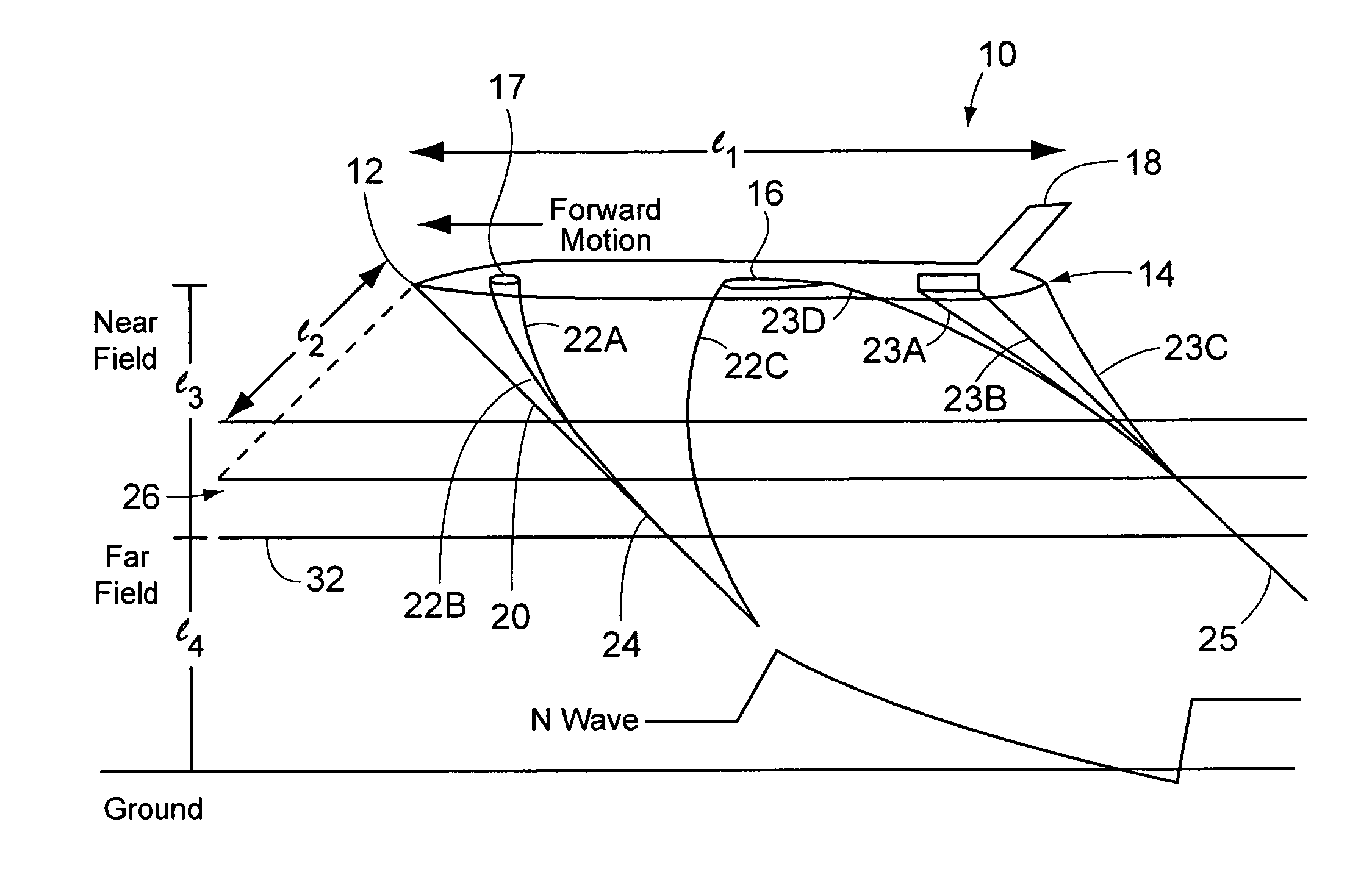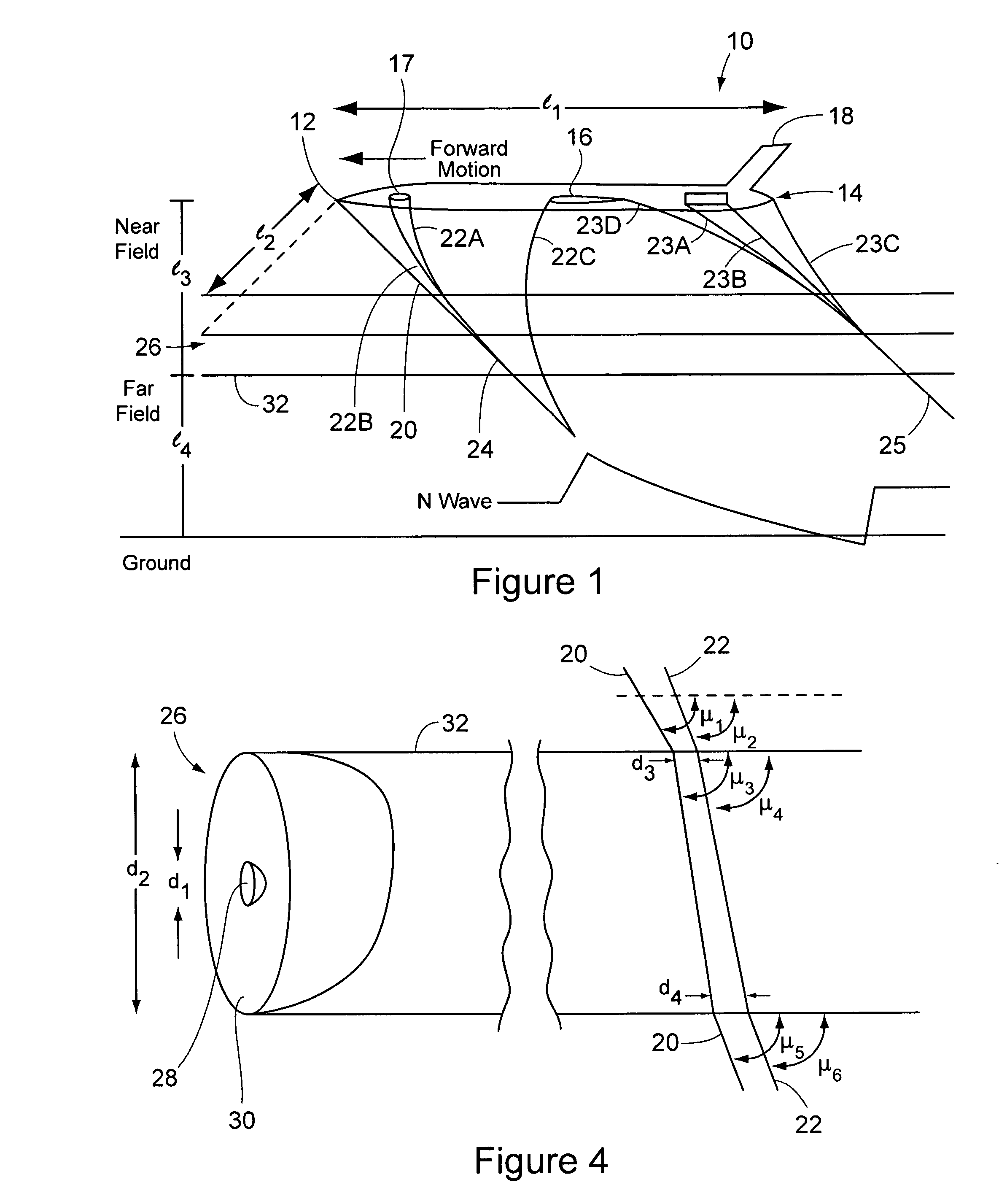Directed energy off-body heating for supersonic vehicle shockwave and sonic boom control
a supersonic vehicle and off-body heating technology, applied in the direction of aircrafts, air-flow influencers, transportation and packaging, etc., can solve the problems of financial impracticality in creating the next generation of supersonic transports, noise conditions on the ground, and the inability to create large commercial supersonic transports, so as to reduce the number of supersonic aircraft, reduce the wave drag associated with supersonic vehicles, and suppress noise and sonic booms
- Summary
- Abstract
- Description
- Claims
- Application Information
AI Technical Summary
Benefits of technology
Problems solved by technology
Method used
Image
Examples
Embodiment Construction
[0020]Referring to the accompanying drawings in which like reference numbers indicate like elements, FIG. 1 illustrates a supersonic vehicle traveling through an atmosphere. The vehicle 10 includes an airframe composed of various major sub-assemblies such as a nose 12, a tail cone 14, wings 16, a canard wing 17, a tail 18, and an engine 19. Each portion of the vehicle can create shock waves as the vehicle 10 moves through the atmosphere at supersonic speeds of which several exemplary shock waves are illustrated. The shock wave 20 is caused by the nose 12 pushing air out of its way. Similarly, shock waves 22A and 22B are shown arising from the canard wing 17 aft of the nose 12 of the vehicle 10. In the flow field far below the vehicle (greater than about 10 aircraft lengths from the aircraft 10 and hereinafter the “far field”) the various shockwaves 20, 22A, 22B, and 22C generally propagate from the vehicle 10 at or near their original mach angles and therefore remain spaced apart fr...
PUM
 Login to View More
Login to View More Abstract
Description
Claims
Application Information
 Login to View More
Login to View More - R&D
- Intellectual Property
- Life Sciences
- Materials
- Tech Scout
- Unparalleled Data Quality
- Higher Quality Content
- 60% Fewer Hallucinations
Browse by: Latest US Patents, China's latest patents, Technical Efficacy Thesaurus, Application Domain, Technology Topic, Popular Technical Reports.
© 2025 PatSnap. All rights reserved.Legal|Privacy policy|Modern Slavery Act Transparency Statement|Sitemap|About US| Contact US: help@patsnap.com



